A is for antennae. Cicadae antennae are situated between their eyes and their clypeus. Insects use their antennae to smell and sense touch, temperature, and vibration.

More:
Abricta curvicosta: The Abricta curvicosta is an Australian cicada also known as the Floury Baker (because its abdomen appears to be floury). You can find this cicada in eastern Australia. Here’s a photo of an A. curvicosta:
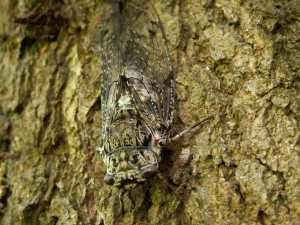
Floury Baker by Michelle Thompson.
Visit Brisbane cicadas for more photos, information and audio.
Ambragaeana ambra: The Ambragaeana ambra is a cicada that can be found in Thailand. This cicada has remarkable brown, yellow, orange and black colored wings. Here’s a photo of an Ambragaeana ambra:
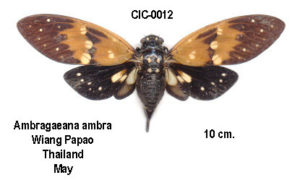
Ambragaeana ambra photo by Michel Chantraine.
Angamiana floridula: The Angamiana floridula is a cicada that can be found in Thailand. This cicada has orange, brown & cream colored wings. Here’s a photo of an Angamiana floridula.
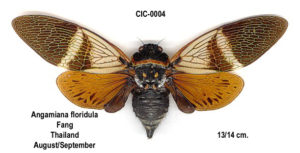
Angamiana floridula photo by Michel Chantraine.
Arunta perulata: The Arunta perulata is an Australian cicada also know as the White Drummer. This cicada can be found in eastern Australia. They’re known for their pronounced sack-like tymbal covers (the white drums?). Here’s a photo of an Arunta perulata:
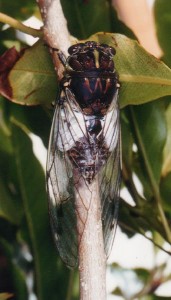
White Drummer cicada (Arunta perulata). Photo by David Emery.
Visit the CSIRO website for more information and an illustration.
Ayuthia spectabile: The Ayuthia spectabile is a cicada than can be found in Thailand. This cicada’s coloration features cream, light brown, black and mint green. Here’s a photo of an Ayuthia spectabile:
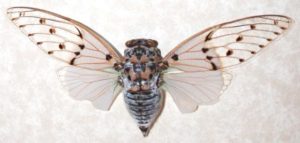
To learn more about Australian cicadas, try the book Australian Cicadas by M.S. Moulds, or online at Brisbane Cicadas.
This is the start of a new feature on Cicada Mania called the Cicada Alphabet.